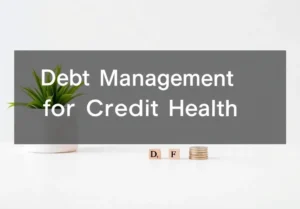Let’s face it: Budgeting can be like trying to herd cats—messy, unpredictable, and downright frustrating. But imagine if those cats could magically align into a purring column of crystal-clear financial goals?
By the end of this blog post, you’ll have a toolkit of automated budgeting wizards ready to transform your tangled finances into an organized column of numbers that even a cat would admire.
Quick Takeaways:
- Choose a tool with automatic expense categorization and customizable budget limits to simplify money management and tailor spending to your lifestyle.
- Look for high-level security features like encryption and multi-factor authentication to keep your financial data safe.
- Automation features in budgeting tools can adapt to irregular income, ensuring a clear financial path even with variable earnings.
What Tools Are Out There?
When it comes to managing your finances, having the right tools can make all the difference. Let’s dive into some of the top automated budgeting tools that are transforming personal finance for everyday folks like you and me.
Mint: This free budgeting tool is like the Swiss Army knife for your finances. Mint links to your bank accounts, tracks your spending, categorizes transactions, and sets budgeting goals. It’s a real-time financial snapshot that’s perfect for keeping a pulse on where your money’s going.
You Need A Budget (YNAB): YNAB takes a unique approach called “zero-based budgeting.” It encourages you to “give every dollar a job,” helping to ensure that you’re allocating funds to savings and debt payment before unnecessary splurges. While YNAB isn’t free, many users tout it as a game-changer for getting serious about savings.
PocketGuard: As the name suggests, PocketGuard helps guard your pocket. It’s a cinch to use, linking up with your accounts to show how much disposable income you have after bills and savings. Plus, it’ll nudge you if you’re flirting with overspending.
Each of these apps has its charm, but what they share is the ability to give you a crystal clear perspective on your financial health.
Can These Tools Really Save Me Money?
Absolutely, if you’re willing to heed their advice! Automated budgeting tools are like having a financial advisor in your pocket. They can help you slash unnecessary expenses by highlighting areas where you’re overindulging – did we really need that third streaming service?
Moreover, these nifty tools serve up timely reminders for bills and subscriptions, so you’ll avoid those pesky late fees. Plus, they can provide invaluable insights into your spending habits, allowing you to spot trends and adjust before they become money pits.
Let’s say you’re a coffee aficionado, and your tool of choice reveals you’re dropping a mini-fortune on espresso shots each month; you could switch up your routine for a home-brewed solution that’s just as satisfying and save a latte money in the process.
How Secure Are Automated Budgeting Apps?
In our digital age, security is a hot topic, especially when it involves our hard-earned cash. Rest assured, reputable budgeting apps are built with security features that rival Fort Knox. Data encryption, multi-factor authentication, and regular security audits are par for the course.
Encryption is an app’s first line of defense, jumbling your data into code that’s gibberish to anyone but authorized users. Meanwhile, multi-factor authentication means you’ll need more than just a password to access your account, adding an extra layer of protection.
Pro-tip: while these apps have got your back, it’s vital that you do your part. This means using strong, unique passwords and being wary of phishing scams. Keep your software updated, and consider using a password manager to keep your login info locked tight.
Remember, knowledge is power, especially with personal finance, and you’ve just powered up by learning about automated budgeting tools and their savvy security measures. Now, you’re better equipped to pick a tool that’s not just beneficial for budgeting, but also bulletproof in terms of security.
Ready to dive deeper into the art of budgeting and financial management? Stick around; we’ve got more wisdom to share.
Is It Complicated to Set Up?
Diving into a new budgeting tool doesn’t have to feel like you’re navigating a maze. Most tools are designed with the user in mind, ensuring that you can hit the ground running with minimal fuss. Here’s a quick-start guide to help you leap the setup hurdle:
-
Sign Up: This one’s a no-brainer. Head to the tool’s website or download the app, and create an account.
-
Link Your Accounts: Connect your bank accounts, credit cards, and any other financial accounts. This is usually as simple as logging in through a secure portal within the tool itself. It’s like giving the tool the keys to your financial kingdom, but don’t worry – top-notch security is a standard with reputable tools.
-
Set Your Categories: Most tools pre-populate with common expense categories, but you’ll want to tweak these to fit your lifestyle. Whether it’s ‘Morning Coffee’ or ‘Pet Pampering’, make it yours.
-
Set Your Budget Goals: Decide on your limits for each category. Be realistic – if you’re a foodie, don’t set a shoestring budget for dining out. You’re setting the guardrails here, so make sure they’re firm but fair.
-
Familiarize Yourself with the Dashboard: Spend some time clicking around. Understanding where to find key information makes it easier to stay on top of your finances.
-
Schedule a Regular Check-in: Set a weekly or monthly date with your budget. Consistent check-ins help you stay on track and adjust as you go.
The initial setup is often streamlined and user-friendly, making your financial overhaul less of an uphill battle.
What Features Should I Look For?
When hunting for the perfect budgeting tool, keep your eyes peeled for features that take it from good to great. Remember, you’re not just looking for a digital ledger – you’re looking for a financial wingman. Here are some key features that can make all the difference:
-
Automatic Categorization of Expenses: The best tools don’t just track expenses; they sort them too, like a personal accountant in your pocket.
-
Customizable Budget Limits: One size doesn’t fit all. Look for a tool that lets you tailor budget limits to your unique financial circumstances.
-
Savings Goals: Aim high with tools that let you set and track progress towards specific savings objectives.
-
Easy-to-Read Reports and Graphs: Numbers can talk; make sure your tool has clear visuals to help those numbers tell your financial story at a glance.
-
Alerts and Notifications: Stay informed with real-time updates on your spending habits and budget reminders. It’s like having a financial conscious tapping you on the shoulder.
-
Security: Strong encryption and security protocols are non-negotiable. Your financial data’s safety is paramount.
One unique feature that often flies under the radar is the ability to forecast cash flow. Knowing how much you’ll have in the bank next Tuesday can be just as crucial as tracking what you spent last Friday.
How Does Automation Help with Irregular Income?
For those of us with incomes that ebb and flow like the tide, automation in budgeting tools can be a game-changer. Here’s how:
-
Adaptive Budgeting: Some budgeting tools can adjust your spending limits based on your income. If you’ve had a bumper month, your budget might allow for a little extra indulgence.
-
“If This, Then That” Rules: Set rules so that when you receive income above a certain threshold, a percentage automatically funnels into savings or investments.
-
Visual Income Tracking: Tools with stellar graphing capabilities can illustrate your income trends, helping you anticipate and plan for leaner months.
Remember this: even with fluctuating income, automation takes the guesswork out of where your money needs to go. By mapping out your finances, you can smooth out the bumps in the road and ride along a well-planned financial path.
Consistency in personal finance can be transformative, and with the right automated budgeting tool, the journey to financial stability can be a whole lot smoother. Whether you’re a freelancer riding the rollercoaster of variable income or a traditional employee looking to get a tighter grip on your spendings, there’s a tool out there to help you reach your goals. With these tips and insights, picking the right one can be less of a chore and more of a smart, strategic choice.
As a financial advisor, my goal is to guide you through the world of personal finance with clear, practical advice. With a dedication to clarity and your financial well-being, I’m here to provide insightful guidance and support as you build a foundation of wealth and security.



